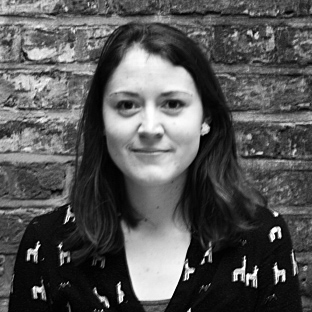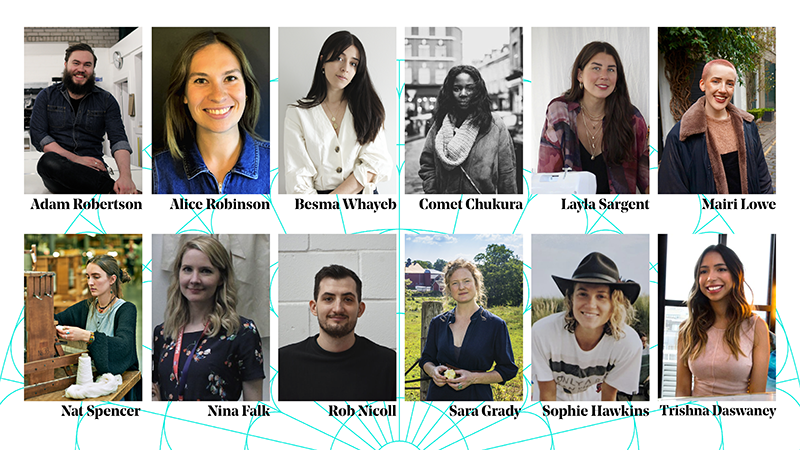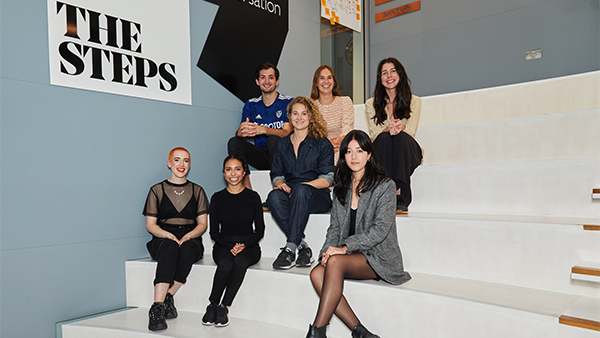How can our places shape a different future for fashion? Introducing Leeds Fashion Futures, a partnership between the RSA and Zero Waste Leeds.
Why fashion needs to change from the ground up
Fashion creates big problems. The industry, with its supply chains that criss-cross the globe, is one of the largest contributors to climate change. It’s responsible for air, water and soil pollution, and for labour abuses and exploitation.
But there is another side to fashion. Our clothing can connect us to places, to the landscapes around us and the materials that those landscapes offer. It can support local economies and promote community, identity and belonging.
How to change fashion and address the big challenges it presents is, therefore, not purely a technical question, but a social one. How might the way we make, use and value our clothing contribute to a flourishing future for people and our environment?
As more of us are recognising the need for change in fashion, brands and retailers are taking steps to reduce their impact. But at the RSA, we think that people and places have the potential to be changemakers here too. Not only as consumers, but as citizens participating in shaping the future. Perhaps communities and places can tap into their own freedom, imagination and creativity to unlock bolder and more radical visions than industry is able to.
Introducing Leeds Fashion Futures
When it comes to fashion, Leeds isn’t just any city. From its origins as a wool trading centre, as the home of high street names including Marks & Spencer and Burtons, and as the birthplace of mass produced clothing, the city has led the world in fashion and textiles. But now that fashion needs to evolve once more, what role could Leeds play in creating a sustainable future?
To explore this, we’ve partnered with Zero Waste Leeds – a local charity working to build a movement for sustainable living in the city – to create Leeds Fashion Futures.
Over the last six months, we’ve worked with local stakeholders from policy, business, waste and creative industries, as well as civil society and citizens, to unpack this question. We’ve been looking at what the past and present of the city tells us about its potential future, and what practical interventions can be created today to take steps towards it.
Over the next few months we’ll be sharing insights, stories and tools from this work, to shine a light on what’s been happening in Leeds, and to inspire others to think about the potential of their local areas and communities to shift our fashion behaviours.
Thinking globally, acting locally
Approximately 4000 tonnes of textiles are landfilled every year in Leeds. This is just the tip of the iceberg when it comes to the impact local fashion behaviours create – consider the impacts from production, transportation, laundering and disposal across the supply chain. Changes made locally can have important ripple effects globally.
This is especially true when local changes are trying to build different kinds of economies. From swapping, sharing, repairing and upcycling, to production which provides good quality jobs and high environmental standards, Leeds has plenty of bright spots. These ideas, when seen together, offer glimpses of a very different kind of fashion system: one which supports local economies and local people while making a contribution to addressing our global challenges.
To make changes that really work, local communities need to find ways forward that are right for them. In Leeds, the city’s heritage has proved an essential part of the narrative thread that weaves the city’s past into its vision of the future.
Fashion can feel lofty, ephemeral, global, exclusive, distant. But when you get up in the morning and pull on your jeans, they are connecting you to other people, to communities and skills, and to the elements of our planet. How we, as a society, choose to make and use those jeans says a lot about what we value in others and in our environment.
Creating fashion which generates equitable livelihoods and replenishes our communities and our environment is a big challenge. We need to come together to imagine this different future, and unlocking the potential of our countryside, towns and cities is a good place to start.
- Hear more about Leeds Fashion Futures in our event on 20 April and watch out for more publications in the coming weeks or explore the Zero Waste Leeds Fashion Hub
- Explore our other work in fashion, Rethink Fashion.
To correct this error:
- Ensure that you have a valid license file for the site configuration.
- Store the license file in the application directory.
Related articles
-
Rethinking Fashion
Blog
Josie Warden Rebecca Ford
A 4-month learning journey with 12 creative ventures to accelerate the transition to a circular future for fashion.
-
Make Fashion Circular
Linear is out of fashion. Let’s design a circular future for our clothing.
-
Regenerative Futures
A future where humans thrive as part of the Earth’s ecology.




Be the first to write a comment
Comments
Please login to post a comment or reply
Don't have an account? Click here to register.